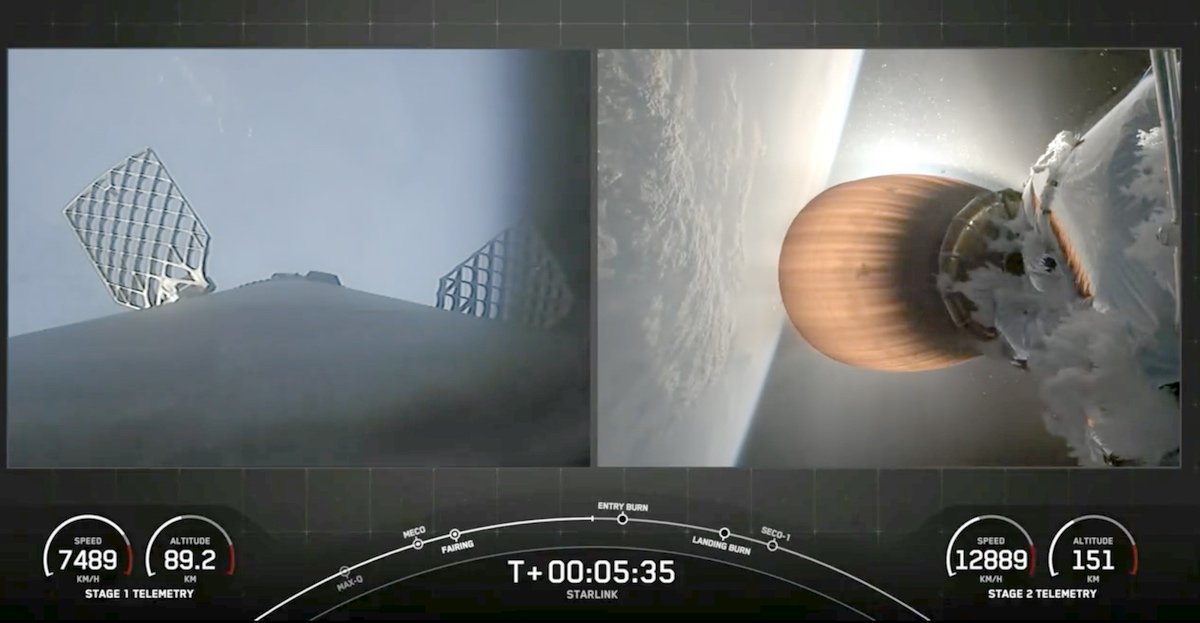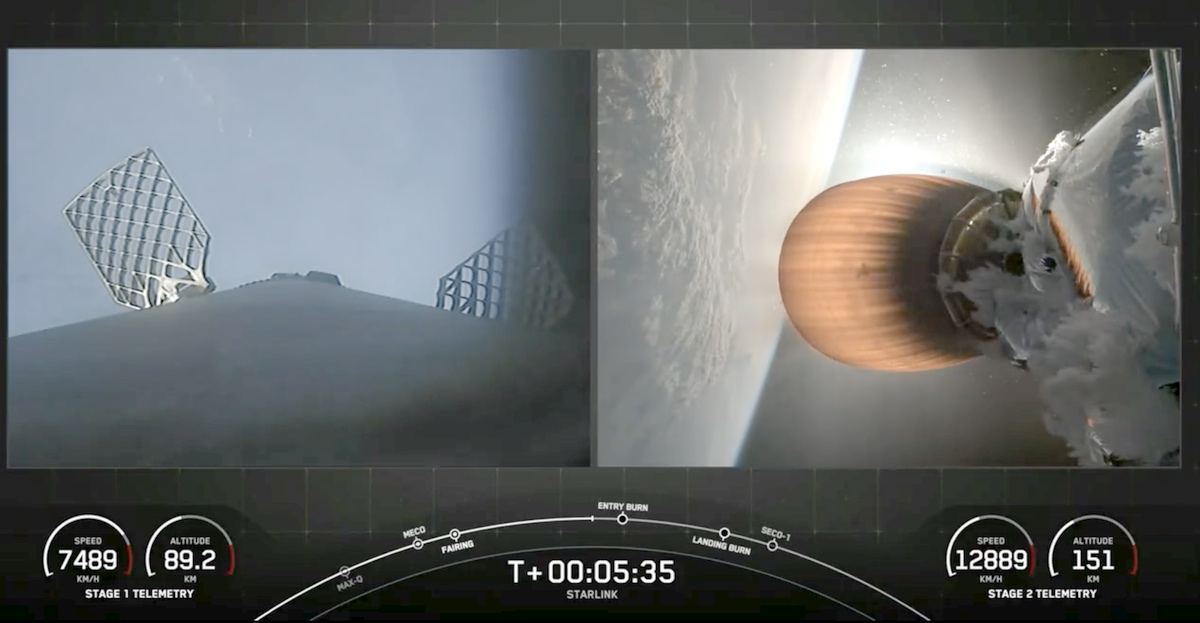WASHINGTON — SpaceX is ready to resume launches of its Falcon 9 rocket as soon as July 27 after completing an investigation into an upper stage anomaly two weeks ago.
The company said in a July 25 statement that it had completed and summitted to the Federal Aviation Administration its mishap report about the July 11 launch, where the rocket’s upper stage failed to perform a second burn and stranded its payload of Starlink satellites in an orbit too low for them to survive.
SpaceX blamed the failure on a liquid oxygen leak traced to a crack in a sense line for a pressure sensor. The crack was created by fatigue from engine vibration and a loose clamp that failed to constrain the line as designed.
The liquid oxygen leak cased the ice buildup seen on parts of the Merlin upper-stage engine during its ascent to orbit, but did not affect the performance the engine on that phase of flight. That leak, SpaceX said, also resulted in “excessive cooling of engine components” such as those that deliver ignition fluid to the engine.
“As a result, the engine experienced a hard start rather than a controlled burn, which damaged the engine hardware and caused the upper stage to subsequently lose attitude control,” SpaceX stated. The stage itself remained intact and was able to deploy the satellites and passivate itself. The satellites, though, were in orbits with perigees too low to survive, as their electric thrusters could not counteract the high atmospheric drag.
SpaceX stated that, as a near-term fix, it will remove the sense line and corresponding sensor, which is not used in flight safety systems. The statement suggested a different long-term solution, but the company did not elaborate. It added that it examined all sense lines and clamps on its existing hardware, which “led to a proactive replacement in select locations.”
While SpaceX completed the investigation, it still needed clearance from the FAA to resume those launches to ensure that there is no public safety issue. The FAA confirmed in a statement to SpaceNews that it had concluded that the issue posed no threat to the uninvolved public.
“After a comprehensive review, the FAA determined no public safety issues were involved in the anomaly that occurred during the SpaceX Starlink Group 9-3 launch on July 11,” the agency stated. “This public safety determination means the Falcon 9 vehicle may return to flight operations while the overall investigation remains open, provided all other license requirements are met.”
SpaceX said it is targeting as soon as July 27 at 12:21 a.m. Eastern for the rocket’s return to flight, carrying a set of Starlink satellites on the Group 10-9 mission from the Kennedy Space Center in Florida. Two other Falcon 9 launches, also of Starlink satellites, are tentatively scheduled for July 28 from Cape Canaveral and Vandenberg Space Force Base.
The July 11 launch mishap and subsequent grounding had ripple effects through the space industry, delaying launches for commercial and government customers. Among those affected is NASA, which has Falcon 9 launches coming in August of a Cygnus cargo spacecraft and the Crew-9 crew rotation mission to the International Space Station.
The agency has not disclosed how those missions might be affected, but the agency is holding media briefings for the Crew-9 mission July 26. The media advisory for the briefings stated that the mission was still scheduled to launch in mid-August.

